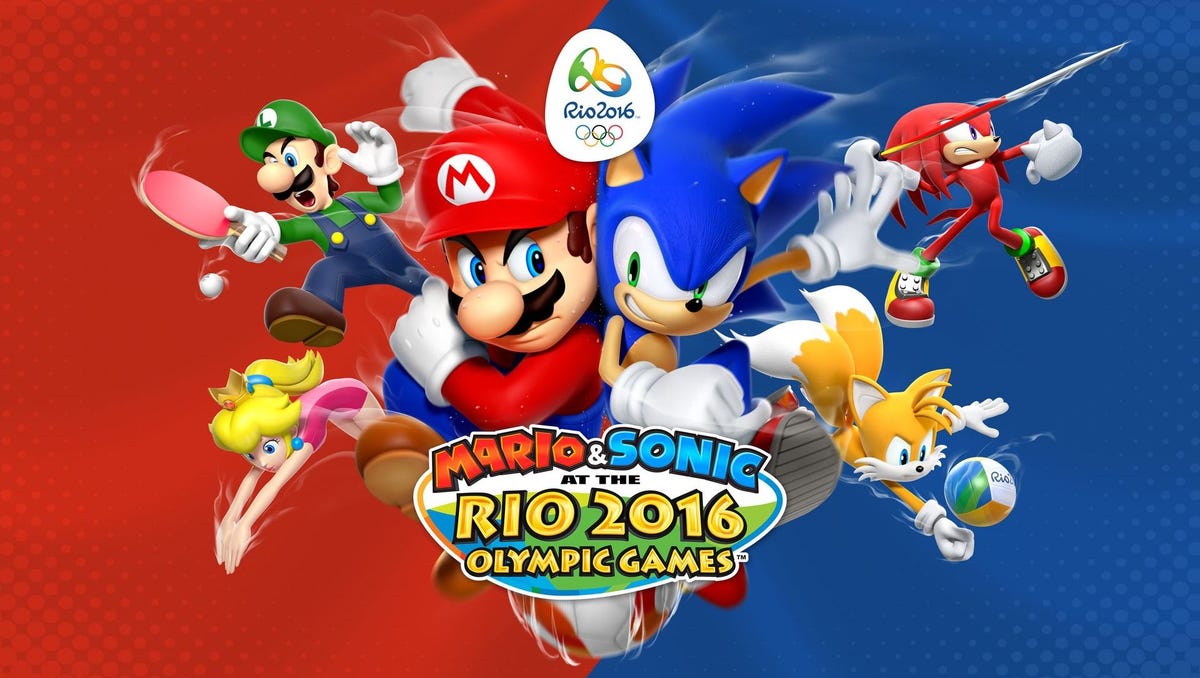
Review: Mario & Sonic at the Rio 2016 Olympic Games (3DS)
As we come in to the fifth generation of these Mario & Sonic Olympics games, I feel like you should probably know whether or not you like them by now. The last game, Mario & Sonic at the Sochi 2014 Olympic Winter Games for the Wii U was disappointing enough that I began to wonder if maybe this franchise was starting to get long in the tooth. That was more than two years ago, and the good news is that Rio 2016 for the Nintendo 3DS ends up being a return to form, for whatever that’s worth.
If you’ve never seen one of these games before, this is a minigame collection. It rests somewhere between Wii Sports, Mario Party, and something like Track & Field games on NES. In total, the game claims to represent 14 Olympic events, though for reasons we’ll get into later, this ends up being something of a misnomer. Much like Mario Party and Wii Sports, the focus here is on competing with friends, though there is no way to play any of these events online, restricting you to AdHoc multiplayer with local friends. Thankfully, the game takes advantage of the 3DS’s Download Play feature, meaning you can at least play with your friends even if they do not own a copy of the game.
The bulk of the single player game is in the “Road to Rio” mode, which provides a light and breezy storyline to follow along as you move through the game’s competitive events. The structure of this story mode has seen a bit of an overhaul compared to past games, as you guide a Mii through a virtual representation of Rio as either a member of Team Mario or Team Sonic as you move towards one of three endings. Not unlike an RPG, your Mii has various stats to denote physical fitness and has the ability to equip new gear, all culminating in a fight against your rival for one of the 14 events at the end of that day. The game even provides you with an easy way to compare stats with your rival so you can see exactly where you need the most work.
When written out like that, “Road to Rio” sounds like a brilliant idea, but none of these systems mesh together in a way that makes any sense. Before you take on that day’s main Olympic event, you can roam around the world map, talking to NPCs and training at various gyms located around Rio. Even though there are 14 Olympic events in Rio 2016, “Road to Rio” also contains a number of extra training events that cannot be played anywhere else in the game. Training at a gym will earn you experience (Training Points) and currency used to buy equippables. Just like an RPG, once you earn enough experience you’ll level up, but as far as I can tell, leveling up does not improve your Mii’s stats (either that or the changes are so minor they are difficult to notice).
Instead, the primary way to raise your Mii’s stats is by visiting one of the merchants around Rio and buying new outfits and athletic gear. But here’s the weird thing: whereas most games would limit the amount of money you have to buy equippables with, Rio 2016 is constantly showering you with more currency than you’ll ever need. If you train at every available gym, by the end of the second day you’ll have enough currency to buy out the almost the entire shop, with one catch: you can’t equip any of it. Instead, equippables are tied to your Mii’s current level, and most of the outfits in the game can’t be worn until many, many hours later. Did you find a weird costume in a treasure chest on the world map? Chances are, you won’t be able to wear it until almost the end of the game. This is to say nothing of the currency system itself, which seems outright worthless given you’re filthy rich almost the instant you step off the bus.
Not that any of it matters, of course: both your Mii and your rival’s stats seem to be more like suggestions rather than actual measurements of ability. Early in the game I faced Yoshi in the 100 Meter Dash, and even after training up at various gyms and equipping special running gear, he still had a statistical advantage. When it came time to actually face off against Yoshi, despite my deficiency I still mashed my way to victory by a wide margin with little effort. Later, the opposite happened: I struggled to win an equestrian event in spite of my stats and riding a “Miracle Horse”. Why bother with gear? Why train at all? Why is there even a currency? “Road to Rio” provides no answers to these questions.
What really matters is the quality of the events themselves, and it’s here that Rio 2016 sees a degree of improvement. Rather than spread quality out equally across everything, special attention seems to have been paid to elevate a select few events while keeping the rest of the game relatively simple. Out of the events on offer, a few too many feature the same forgettable “rapidly press the button as fast as possible to win” gameplay that has been a long-running staple of the worst sports games. However, events like Golf and Football (aka Soccer for us Americans) have been fleshed out enough that they almost could be stand-alone games in their own right.
A returning staple from past Mario & Sonic games is the “Dream Event,” or as it’s known here, a “Plus Event.” Plus Events add in familiar mechanics from Sonic and Mario’s respective universes to give some extra color to official Olympic events. Dream Events were always my favorite part of past Mario & Sonic games, but here, many of them feel like an afterthought. The general rule of thumb in a Plus Event seems to be to cram in Mario Kart items and hope for the best, but in most of the events, that simply does not play. Other events will pepper their courses with extra monsters you have to dodge, but rarely does that make for a new or interesting twist. The exceptions to this are the Golf and Table Tennis Plus events, which add an extra layer to their gameplay with significantly changed environments or brand new rule sets.
Last, and definitely least, is Rio 2016’s new “Pocket Marathon” feature. Utilizing the Nintendo 3DS’s pedometer, you can count your steps as you work towards the goal of walking the same distance as a real Olympic marathon. Pocket Marathon offers daily check-in bonuses like a mobile game, and you’re awarded extra bonuses for reaching certain distance milestones. It’s kind of a neat idea, and fits in with Nintendo’s focus on “Quality of Life” improvements, but the Nintendo 3DS is much too bulky for it to comfortably fit in your pocket, especially if you happen to own one of the XL-sized handhelds.
Mario & Sonic at the Rio 2016 Olympic Games is kind of a mixed bag. Taken as a sum of its parts, it is easy to be disappointed with the overall package. Similar things could be said about most minigame collections, and like most minigame collections, some of these parts rise up to become worth playing. The only real complaint is content: with a game like this, you’re getting a lot of little bits. I had tons of fun with the Rhythmic Gymnastics event, but with only three songs to dance to, the fun isn’t built to last. That’s a good summation of Mario & Sonic at the Rio 2016 Olympic Games: even at its best, you’ll be better served by playing dedicated versions of a lot of these games. But there’s still something to be said for a lot of a little, because once you’ve exhausted yourself on Golf, you can always switch to Boxing. Or Archery. Or Beach Volleyball. Just not ever 100 Meter Dash.



![Private: [ID: lixZHIve0xA] Youtube Automatic](https://lastminutecontinue.com/wp-content/uploads/2024/02/private-id-lixzhive0xa-youtube-a-360x203.jpg)

![Private: [ID: dzlJGNennZ8] Youtube Automatic](https://lastminutecontinue.com/wp-content/uploads/2022/08/private-id-dzljgnennz8-youtube-a-360x203.jpg)
